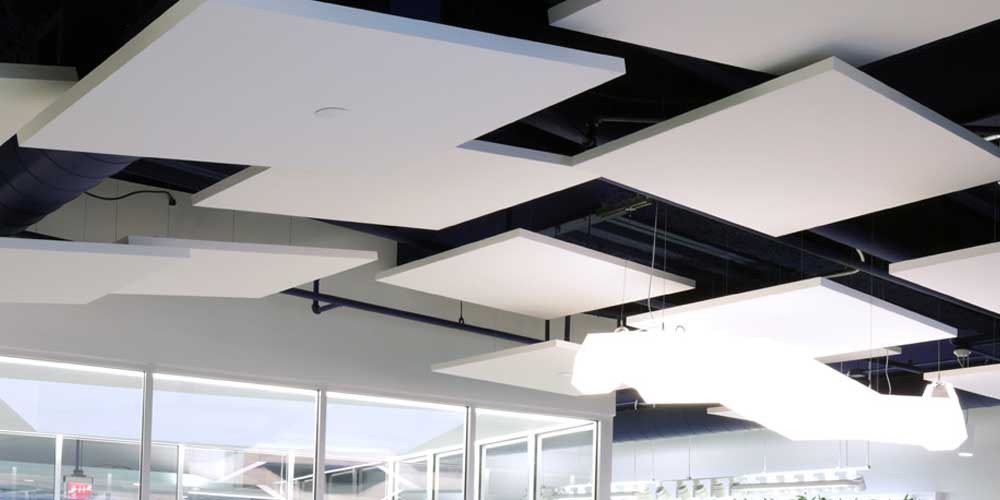Sound Absorb Ceiling
Sound Absorb Ceiling
A Sound Absorb ceiling is a secondary ceiling, hung below the structural ceiling both to treat room acoustics and to look attractive. Suspended ceilings have the added advantage of hiding the mechanical, electrical, and plumbing installations from view while maintaining some level of access to these utilities. This article will explain the wide range of suspended acoustical ceiling types, with a focus on the acoustic characteristics rather than access, installation, or cost. Typically ceiling tiles are 600mm by 600mm or 600mm by 1200mm.
An interior design lacking acoustical forethought is a rare commercial project today. Unlike walls, ceilings do not reflect sound directly to our hearing, since our ears are oriented on our heads vertically, not horizontally (at least for most of us). Technically, this is an oblique surface to hearing. But ceilings have several things going for them when it comes to sound control, especially in commercial buildings.
- Ears: In most commercial spaces, the ceiling is closer to our ears than walls; treating it helps hearing.
- Surfaces: The ceiling plane is the simplest surface to treat acoustically without compromising design.
- Lows: You can load the back of a suspended ceiling with thick, soft absorptive materials along with air space to treat low bass frequencies. It’s hard to use thick absorptive materials on walls, especially soft materials, and still look and function well
How do Sound Absorb Ceilings affect sound performance?
Sound Absorb Ceilings, then, are installed for one purpose, or a combination of acoustical purposes (here slightly oversimplified).
- Sound absorption: Wave energy is taken in when an absorbing material encounters sound; part of the energy is transformed into heat and part of it is transmitted through the material.
- Sound reflection: Wave energy bounces back when it strikes a material; part of the energy bounces back directly and part of it indirectly as reverberation.
- Sound diffusion: Wave energy bounces back evenly in a room. In a perfectly diffusive sound, space reverberation times are the same at any listening position.
Room acoustics is a science and an art. The complex physics—and opposing opinions—behind room acoustics is beyond this article. However, since the bulk of questions we get about acoustics focus on sound absorption, we’ll discuss the types of suspended acoustic ceilings from that angle.
What materials are used for Sound Absorb Ceilings?
In the zodiac of acoustic ceiling products, it helps to break the topic into three classifications: materials, shapes, and colors/textures. The MATERIALS used for suspended acoustic ceilings fall into Five Main Groups:
- Mineral Fiber
- Fiberglass
- Metal
- Wood
- Specialty materials
You can think of acoustical ceiling materials as consisting of two parts: a “face” (visual architectural surface) and a “body” (sound-absorbing materials).
The “body” part of sound absorption falls into two broad material types: mineral fibers and glass fibers. These fiber types are doing all the heavy lifting in commercial acoustics today. They work this way: when the ordered movement of air molecules (sound) strikes microscopic fibers, they turn into disordered movement (heat) and the effect is absorbed sound. Other acoustic materials such as open-cell foams, cotton, and carbon fibers are used in special situations, like sound studios. These are expensive and not used widely in commercial suspended ceilings.
If acoustical consultants are interested in the “body,” designers are interested in the “face,” the surfaces put in front of the sound-absorbing materials. They come in all varieties within the Big Five.




